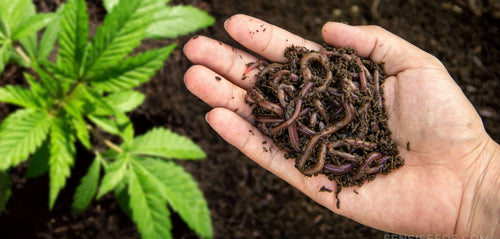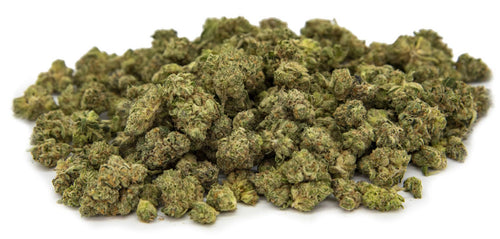#77: Fact or Myth: Can You Judge Cannabis Quality by Its Ash?
#77: Fact or Myth: Can You Judge Cannabis Quality by Its Ash?
Derived from the Greek word 'mythos' meaning 'story', myths are fictional stories that are often believed to be true but have no factual evidence to support them. One of the most common myths in the cannabis world is the belief that white ash indicates high-quality cannabis while dark ash signifies low-quality cannabis.
A hotly debated topic among cannabis enthusiasts for years, this myth has sparked numerous discussions and even scientific research. But why do so many people believe that the colour of ash is a reliable indicator of cannabis quality? And what truth lies behind this myth?
To find out, let's first take a closer look at the science behind ash colour in cannabis.
The myth of white ash quality

It's a commonly held belief that the whiter the ash, the better the quality of cannabis. When a product is well-flushed and contains minimal impurities, the ash tends to be whiter, say proponents of this myth. But think about it - cigarettes, with over 600 ingredients and 7000 harmful chemicals, produce white ash as well. Does that mean they're high-quality products? Not at all.
On the other hand, black ash is believed to be a sign of low-quality cannabis that hasn't been properly flushed before harvest. It's common to hear people say that black ash is full of impurities and chemicals, making it less potent and potentially harmful.
This popular belief has been challenged by scientific evidence in other fields, such as tobacco research. So why do people still hold on to this myth in the cannabis community? And is there any truth behind it?
Let's take a closer look at the science behind ash color in cannabis to find out.
The real factors behind ash colour
Ash colour is primarily determined by the combustion process, which involves burning plant material to release its active compounds. When cannabis is burned, the heat breaks down the cannabinoids and terpenes present, leading to a chemical reaction that produces ash.
But what determines whether this ash is white or black? Here are four main factors that play a role in the colour of ash:
Combustion temperature: The temperature at which cannabis is burned plays a significant role in determining the colour of the ash. Higher temperatures above 230°C (around 450°F) cause more complete combustion, resulting in whiter ash that is mostly made up of minerals. On the other hand, lower temperatures lead to incomplete combustion and darker ash that is rich in organic compounds.

When it comes to ash colour, it's essential to focus on the combustion process rather than the quality of the cannabis itself.
Moisture content: Another crucial factor is the moisture content of the cannabis. Dry buds with low moisture levels produce whiter ash as they burn more completely. On the other hand, cannabis with a higher moisture content burns at lower temperatures, resulting in darker ash.
If you're trying to achieve white ash, make sure your cannabis is adequately dried before smoking. However, keep in mind that overly dry buds can also affect the flavour and potency of the cannabis.
Flushing: Contrary to popular belief, flushing (removing nutrients, pesticides, and other chemicals from the plant) does not significantly impact the colour of ash. While flushing may improve some aspects of quality such as taste, it is not the sole determinant of ash colour.
Just because the ash is white does not mean that the cannabis was properly flushed. Similarly, black ash does not automatically indicate a lack of flushing.
Rolling technique: The way a joint is rolled and how tightly or loosely packed it is can also affect ash colour. Tighter rolls that burn slower tend to produce whiter ash, while looser rolls that burn faster result in darker ash. Furthermore, the type of rolling paper used can also affect the colour of ash.
To achieve white ash, it's important to consider the roll and paper used in addition to the quality of the cannabis itself.
What is the real test of quality?

To judge the quality of cannabis, it's important to look beyond the colour of the ash. The real test lies in the smell, taste, and effects of the cannabis, which can only be determined through personal experience. Does it have a pungent aroma? Does it taste smooth and satisfying? And most importantly, does it provide the desired effects? These markers of quality are what truly matter, not the colour of the ash.
Start by paying attention to the source and cultivation practices of the cannabis. Look for well-trimmed, properly cured buds with a strong aroma and trichome coverage. And most importantly, trust your own judgement and experience.
Let's put it to rest - the colour of ash is not a reliable indicator of cannabis quality. It's time to break free from this myth and focus on what truly matters - the overall quality and effects of the cannabis we consume.
The 'mythos' of white ash
When the Greeks coined the term 'mythos', they understood that stories can be powerful tools in shaping beliefs and perceptions. The myth of white ash being a reliable indicator of cannabis quality is a prime example.
While it may seem like a straightforward way to judge cannabis quality, the truth is that ash colour is influenced by several factors that have little to do with the quality of the cannabis itself. If you want to determine the quality of your cannabis, rely on your senses and personal experience rather than popular beliefs. You'll be surprised at what you may discover.










